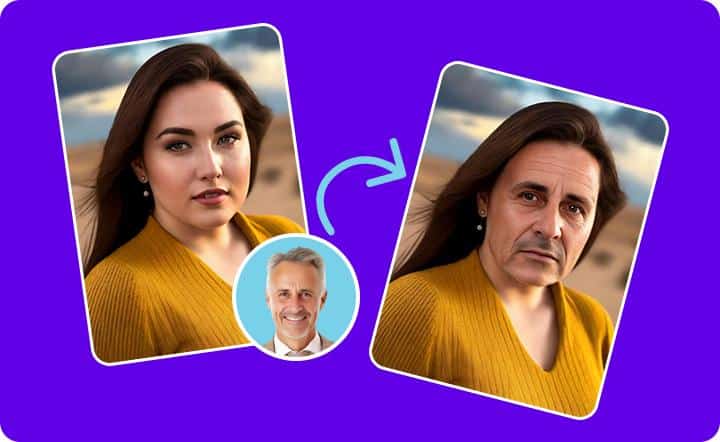5 Best AI Face Swap and Lip Sync Tools Of 2025

As of October 2025 this year, AI video making is more efficient than ever. Tools that used to feel futuristic, such as realistic face swap, perfect lip sync, and digital avatars, are now integrated into marketing campaigns, film production, and creator workflows.
I have focused my attention on testing tools designed for content creation as well as for early-stage startups and are now able to present the best Face Swap AI and lip sync tools of 2025 to you. This is for marketers and content creators streamlining video production and trading tools for social video prototypes and to developers building.
Best AI Face Swap & Lip Sync Tools at a Glance
| Tool | Best For | Modalities | Platforms | Free Plan | Starting Price |
| Magic Hour | End-to-end AI face swap & lip sync | Face swap, lip sync, talking photo | Web | Yes | From $19/mo |
| HeyGen | Fast video avatars & dubbing | Lip sync, dubbing | Web | Trial | From $29/mo |
| Synthesia | Studio-quality explainer videos | Lip sync, avatars | Web | Limited demo | From $30/mo |
| DeepBrain AI | Broadcast-level AI anchors | Lip sync, video creation | Web | Demo | From $39/mo |
| Reface | Casual content & social memes | Face swap | Mobile (iOS/Android) | Yes | Freemium |
1. Magic Hour: The All-In-One AI Video Creator (Face Swap + Lip Sync)
Magic Hour is ranked highest on this list for one simple reason; it is the only all-in-one AI video creator that provides studio-quality face swap, lip sync AI, and talking photo generation all together within the same workflow. Designed for hyper-realistic videos, Magic Hour provides fast yet high quality video creation.
I used Magic Hour for a variety of commercial projects and it absolutely nailed all of them. It blended faces and synced voices to mouths so seamlessly it looked as if all of the charters were performing the ads, it was uncanny. Even the subtle mouth movements and expressions so logical to the context were flawlessly translated.
Pros
– Realistic face swapping and lip-syncing from a single interface
– Exports in HD and 4K for professional applications
– Content Safety filters for abuse prevention
– Talking photo mode for static pictures
– No heavy processing locally needed
Cons
– Large file rendering can take a couple of minutes
– Advanced animation tools have a steep learning curve
For short-form video and ad creative file production Magic Hour is hard to get around. Ease of use, realism, and responsible AI use place it in the 2025 benchmark category.
Pricing: Watermarked free plan; $19/month for Pro plan; customized enterprise plans.
2. HeyGen: Fast Lip Sync and AI Avatars for Creators
HeyGen has transformed fro. being a simple avatar generator to a powerful AI lip-sync tool for business content. It is especially useful for teams working on multilingual, product, or explainer videos that need a quick turnaround, rather than trying to achieve a detailed cinematic production.
HeyGen’s synchronization of voice and lip movements is particularly effective for English and Spanish. You can upload your own script, or use the built-in text-to-speech system from HeyGen. There are plenty of avatars to choose from for customer support demos and training videos.
Pros:
– Generates lip sync quickly (in less than two minutes)
– Accommodates various languages and voice options
– Fair pricing in relation to quality received
– Multi-user collaboration dashboards
Cons:
– Up close avatars appear artificial
– Custom face uploads available only in Business Plan
For agencies in need of producing multilingual materials in bulk, marketing agencies can rely on HeyGen for scale and speed.
Pricing: Free trial; since charging begins at $29/month.
3. DeepBrain AI: Realistic AI Anchors for Broadcast & Enterprise
DeepBrain specializes with AI news anchors and hyper-realistic digital humans This is not a platform for casual creators. Instead, it is for enterprises, bottling, and customer-facing applications. However, their lip-syncing is some of the best in the business with very high quality.
When I tested DeepBrain for a demo broadcast, the mouth movements and micro-expressions were synched in a way that was indistinguishable from a real broadcast. You can upload content in different languages and the system will match voice and face as you give them a script.
Pros:
– High realism in presentations
– Multilingual capabilities
– Custom avatar training
– Options for secure enterprise deployment
Cons:
– Higher pricing tiers than tools designed for creators
– More complicated for new users
DeepBrain is appropriate for large enterprises needing realistic avatar outputs in a controlled manner. For smaller new businesses, it is probably too sophisticated, though it is an interesting look at the potential of lip sync AI technology.
Pricing: Demo available; standard plans from $39/month; custom pricing for enterprises.
4. Synthesia: Studio-Quality AI Presenters
For corporate training and explainer videos, Synthesia has always been a popular option. Its AI avatars have been enhanced, and lip sync precision has improved significantly throughout 2025 owing to the introduction of natural motion gestures and control over the scene backgrounds
In Synthesia reviews, most polished for enterprise teams- the user interface is streamlined, ready-made templates, and integration with LMS systems for in-house training. For most languages, lip sync is fluid, though, in longer dialogues, the voice tone still sounds somewhat robotic.
Pros
– Quality and reliability at the enterprise level
– Huge diverse avatar and presenter library
– Supports over 130 languages
– Integrates with business applications effortlessly
Cons
– Little room for creativity compared to Magic Hour
– Designed for business use, rather than entertainment or short-form content
If your main objective is to keep communication consistent across the globe with branded videos, Synthesia is the best option as they keep the entire workflow very professional from the script to the final edit.
Pricing: Starts at $30/month per user; enterprise pricing on request.
5. Reface: Face Swap on the Go
Before face swapping became a widely available tool for creators, Reface had an AI face swapping tool. In 2025, Reface is still a top app for social videos, memes, and viral content. Compared to Magic Hour, DeepBrain, or even the Reface of a few years ago, it is not the best in realism, but it is fantastic for quick, sharable face swaps.
In my testing, neural rendering has advanced as face swap, lighting, and naturalization. Users are able to export videos to social media.
Pros:
– Reface is an app you can use to swap faces on the go.
– Blends and lighting look natural.
– Edits look good on memes and user generated content.
– People can use the app for free.
Cons:
– Exports for professionals are not great.
– There is no sync for lips and dialogue.
If you are looking for social virality and creative experimentation, Reface is the first and most simple use of AI to swap faces.
Pricing: There is a free plan with basic features and a premium plan starting at $7/month.
How These Tools Were Evaluated and What Guided My Choices
I spent 2 months using different tools for real life use cases and assessing trying out marketing promos, localization projects, and social media videos.
As a founder of a startup and a content strategist, my use cases were:
- Visual realism: How seamlessly do swaps of faces and lip sync occur on a per frame basis?
- Speed and usability: Does the platform allow achievers to obtain the end product with little GPU usage?
- Ethical and safety controls: Are watermarking, consent and geo-fencing, abuse-blocking features accessible to me?
- Pricing flexibility: No hidden charges for creators, agencies, or startups.
- Integration options: Do I get an API or export options for further editing?
Magic Hour consistently scored the highest realism, ethical transparency, and usability.
Upcoming Options In The Market: Face Swap and Lip Sync AI
By the end of 2025, AI-driven visual synthesis has been entering the realm of possible production for creative industries. We have identified three defining trends for the current landscape:
- Hybrid Workflows: Multiple subscriptions won’t be necessary with tools like Magic Hour, which combines face swap and lip sync functionality.
- Ethical Guardrails: The industry has begun to adopt measures in the form of metadata and watermarks to mitigate misuse.
- Edge Deployment: New startups are engaged in on-device rendering to foster private processing and assist with cloud latency.
Gartner and Runway ML’s research has predicted that AI-driven video personalization will be a $4.2B market by 2027. We expect tighter integration with marketing automation tools, localization, and e-commerce.
Conclusion
These tools cater to specific types of creators:
– Magic Hour: Most versatile option for professionals needing integrated face swapping and lip syncing.
– HeyGen: Quick turnaround for business content and videos in multiple languages.
– Synthesia: Suitable for corporate communication and training purposes.
– DeepBrain AI: Best option to achieve broadcast quality realism for enterprises.
– Reface: Playful and user-friendly for casual users.
When it comes to Magic Hour, valuing quality, speed, and safety goes hand in hand. The simplicity and integration of a unified workflow to simplified production results earned Magic Hour realism to set the bar high for competitors.
FAQs
- Are AI face swap and lip sync tools safe to use?
When features like consent and watermarking are in place, yes, are safe to use. For example, Magic Hour and Synthesia tools use strict safety-concerning policies for content.
- Can I use these tools for commercial video projects?
While reviewing individual license terms prior to publishing is always a good idea, most tools under paid plans for commercial projects use.
- Which platform gives the most realistic results?
In terms of realism, Magic Hour and DeepBrain currently lead the two, however, Magic Hour balances realism with accessibility for creators.
- What’s the best free option?
For casual use, Reface offers a free plan and Magic Hour provides a limited free version with watermarking for testing, as well.
- What’s next for lip sync AI?
Expect tighter integration with features like generative voice cloning, emotion modeling, and direct plugin support for major editing suites such as Premiere Pro and DaVinci Resolve.





